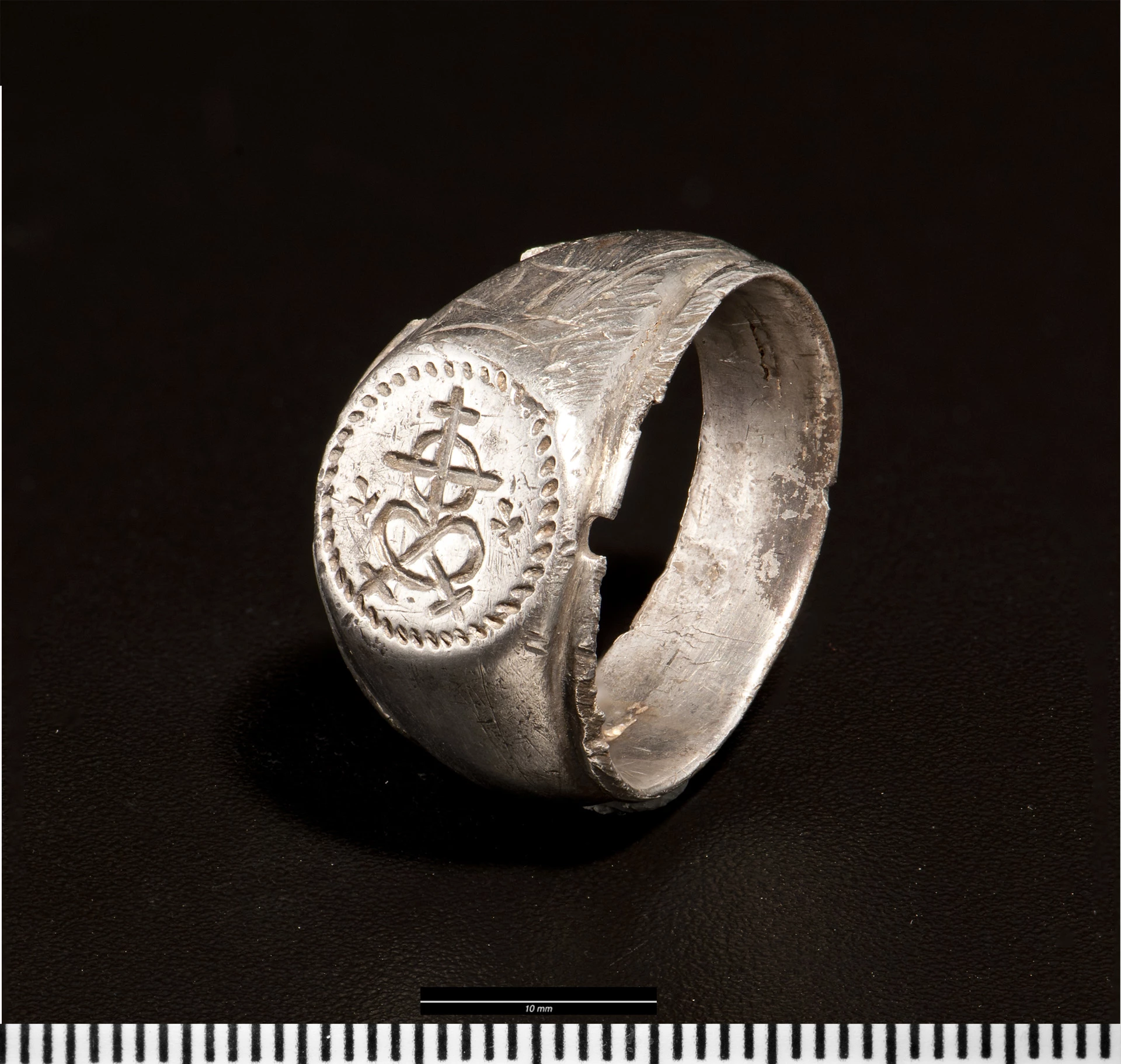Signet Rings
Merchant's signet ring from Haverfordwest
Signet ring from Sully
Meaning was also conveyed in the imagery portrayed on signet rings, which were often worn on the thumb. It is a type of ring still worn today, though now rarely used for its original purpose. In an age when even the wealthy and powerful could not be assumed to be literate, the signet ring featured a personal seal. This was used in place of a signature as a way of authenticating documents and was also an indicator of higher social status. Heraldic devices were used for those who had coats of arms, but for people lower down the social scale a variety of symbols, imagery and lettering could be used.
For merchants, heraldry was replaced by merchants’ marks. A fifteenth or early sixteenth-century silver signet ring displaying such a mark was found in 2014 by Mr John Rees at Haverfordwest, and has since been acquired by Saving Treasures; Telling Stories for Haverfordwest Town Museum. The mark, made up of interlaced, curving crosses, is accompanied by a tau cross, associated with St Anthony and the treatment of St Anthony’s Fire, or ergotism, a disease caused by eating contaminated grain. The merchant’s mark itself was a personal device identifying the wearer, but the inclusion of the tau cross gives the ring a separate, religious overtone, and would have been specially chosen. St Anthony was not a saint who was especially popular in late medieval Wales, but as merchants were mobile this devotion could have been picked up elsewhere; west Walian merchants traded all along the Bristol Channel, as well as to Ireland, Spain and Portugal, or it could have belonged to a merchant from overseas.
A much simpler signet ring was discovered at Sully in the Vale of Glamorgan in 2013 by Mr Michael Gerry. Made of silver, decorated with a plain, four-petalled flower and dated to the late 15th or 16th century, it is a much more enigmatic example, giving virtually nothing away about the identity, occupation or social status of its owner.
Some rings seem to have been hybrids, with more than one purpose or significance. A particularly intriguing example is a 1st or 2nd century silver Roman ring found by Mr Leighton Jones in the Darran Valley, Caerphilly, in March 2010. It once held an oval intaglio, possibly a precious or semi-precious stone, which would have had an incised decoration used for sealing documents. So in one sense this is a signet ring like the ones described above, and would have identified its owner, but the inclusion of a precious or semi-precious stone gave the item at least one additional layer of meaning. The stone was attractive and decorative in its own right, suggesting something about the status and wealth of the individual who could have afforded it. But it would also have been thought to have intrinsic powers of healing or protection, and each gemstone was associated with a variety of medicinal, apotropaic or occult uses.

